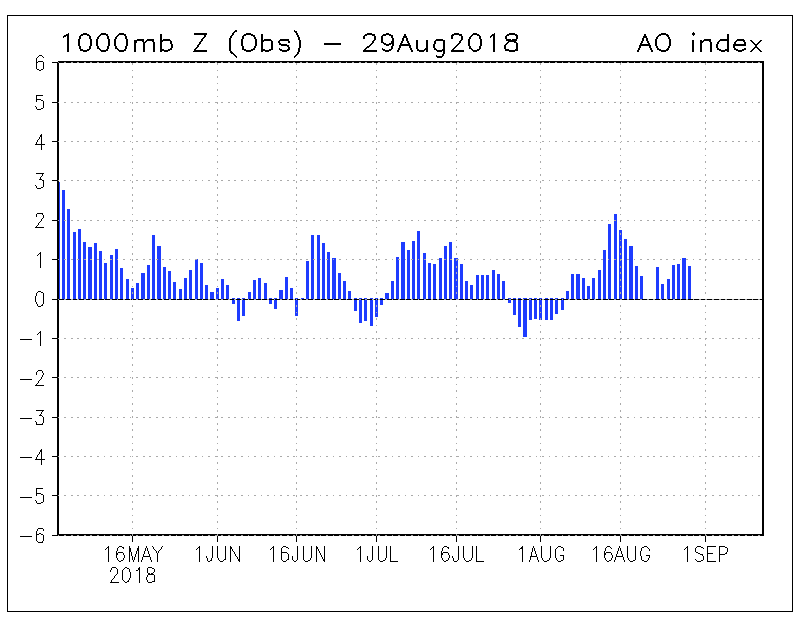Here is the QBO data since May 2017. Note the timestamp(YYMM) in the 2nd column. 50mb values are in the 4th column from the left and 30mb values are in the 6th. Transition from a positive to negative QBO is highlighted in blue.
Here is the same data from 1983--1985. 50mb and 30mb QBO values during the winter of 1984-85 are indicated in red. The progression is very close to this year.
Note that the 1984-85 winter had a positive 30mb QBO with a negative 50mb QBO. Descending westerly anomalies were prevalent which is also known as the westerly shear phase.
It was only natural for me to take a look at solar data following this find. In turns out that the 1984-85 winter came at a time with low solar activity. We were approaching a solar minimum, similar to today. The graphic below gives you an image of the sunspot cycles I am referencing. The yellow box is an approximation of where we were at that time. I cross-checked with raw monthly data to confirm values.
1984-85 had a sudden stratospheric warming event on New Years Day. Here is what 1984-85 looked like at 500mb from January through February:
Surface temperature anomalies across North America:
Europe
That is the potential cold we are talking about as we head towards winter. There are caveats, however. For example, the ONI index in 1984-85 was not a good match to the expected outcome this year. The general consensus is at least ENSO neutral, but likely a weak el nino(west-based) event for this winter. The 1984-85 winter was a moderate-strong La Nina.
Another caveat is that the upcoming QBO/solar phase is not the most favourable couplet. That would occur in a -QBO with downwelling easterlies and low solar activity. 2009-10 had a +QBO with downwelling easterlies. Some research suggests that QBO phase is less important than shear and 2009-10 is an example of this. A major -NAO event dominated that winter.
If the 84/85 match is extrapolated, it is likely that we will experience downwelling westerlies this winter. These have been shown to resist SSW events via the Holtan-Tan effect. These downwelling anomalies help strengthen the polar night jet which contracts the stratospheric polar vortex and inhibits disruption of the vortex. There has also been research done suggesting that La Nina is more favourable for sudden SSW events when coupled with -QBO/weak solar activity. La Nina is not expected this fall/winter.
Another interesting tidbit... the Arctic Oscillation has been very positive this summer despite weak sunspot activity. The correlation between May--August solar flux and 500mb heights is shown below. Note the negative correlation across polar regions which suggests that low solar flux supports higher heights across the arctic(a negative AO). This was the opposite of the pattern we saw this summer.
Correlation
AO index since May 1st
My goal with this post was not to post a winter forecast but to get the mental gears turning with respect to the winter pattern. It is still late August. I do believe that there are above normal chances for a colder than normal winter across the Lakes/East as a result of the weak modoki el nino expected with AMO/PDO near neutral. If AP index can stay relatively quiet(it has been volatile lately), a -NAO becomes more likely this winter. A descending westerly QBO is unfavourable but is only one factor and is why the NAO may be hard to predict this winter. Even if the NAO doesn't cooperate, a modoki nino favours a +PNA so a cold Eastern NA pattern could rely on Pacific help.
Thanks for reading. Feel free to leave questions in the comment section or on twitter(@blizzardof96).
Ethan





















